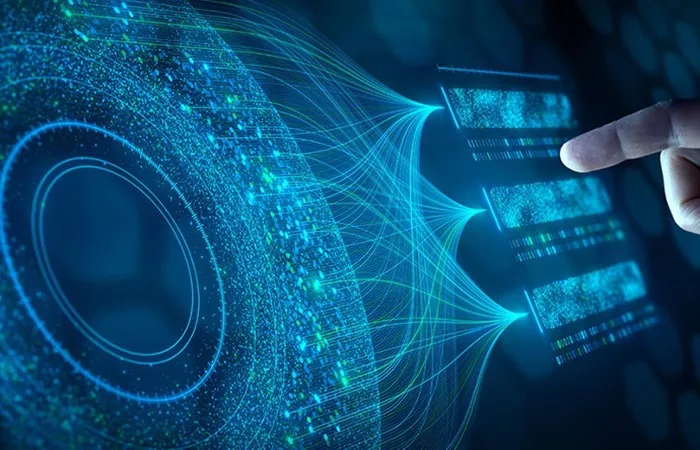Industry Leaders Gather in Beijing to Chart AI’s Next Frontier
BEIJING, June 6-7 (Xinhua) – The 2025 Zhiyuan AI Conference in Zhongguancun brought together global experts to explore cutting-edge developments in artificial intelligence, with particular focus on embodied intelligence and multimodal systems. Shanghai Securities News reporters learned that AI models are transitioning from digital to physical world interaction, with multimodal technology approaching an inflection point for widespread adoption.
Embodied Intelligence Takes Center Stage
The conference showcased significant progress in developing AI systems that interact with the physical environment, marking a pivotal moment for industrial applications.
From Digital to Physical
“Our ultimate goal is creating robots that can perform practical tasks in both homes and factories,” said Wang Xingxing, CEO of Unitree Robotics, during an embodied intelligence panel. This sentiment was echoed throughout the event, with multiple industry leaders identifying 2025 as a crucial year for moving embodied AI from labs to real-world applications.
Wang Zhongyuan, President of Zhiyuan Research Institute, noted the evolution from large language models to native multimodal systems and world models, accelerating AI’s entry into physical spaces.
Hands-On Demonstrations
Interactive exhibits allowed attendees to experience cutting-edge applications firsthand. In the embodied intelligence section, various robot configurations (single-arm, wheeled dual-arm, and humanoid) running on RoboOS 2.0 and RoboBrain 2.0 platforms successfully performed tasks including burger preparation, drink pouring, claw machine operation, and household organization in response to voice commands.
“Enhanced reasoning capabilities have dramatically improved models’ ability to plan and execute tasks while adjusting workflows based on environmental feedback,” said Zhang Peng, CEO of Zhipu AI. “This advancement enables AI to transition from digital to physical domains.”
Multimodal Models Approach Inflection Point
While 2024 saw explosive growth in language models, 2025 is poised to become the breakthrough year for multimodal systems, according to industry experts at the conference.
Current Research Frontiers
Visual-Language-Action (VLA) models emerged as a key research focus. Wang He, founder of Galaxy General, compared their potential to autonomous driving’s end-to-end solutions, noting that while VLAs represent a starting point, achieving human-level embodied intelligence will require continuous integration of new modalities.
Industry Signals
Shengshu Technology CEO Tuo Yihang identified three critical indicators of progress:
- Rapid technical iterations in audio/video generation models
- Strong market demand across industries
- Accelerated implementation timelines for video-related applications
However, Wang Zhongyuan cautioned that while progress continues, the field hasn’t yet reached its “ChatGPT moment” for multimodal systems.
Technical Challenges
Chen Jianyu, founder of Star Era, highlighted the complexity of transitioning from virtual environments to physical world interaction, requiring deeper physical understanding and coordinated operation across robotic systems – a significant hurdle for embodied intelligence development.
Open Source and Data Sharing: Foundations for AI Progress
Conference participants universally emphasized open collaboration as essential for AI advancement, with dataset sharing identified as a critical component.
Data’s Central Role
“Datasets are crucial for AI, especially large models,” said Lin Yonghua, Vice President and Chief Engineer of Zhiyuan Research Institute. “This applies not just to multimodal systems but also embodied intelligence – training robots to better understand the world requires new data inputs.”
Economic Impact
Harvard Business School research presented at the event valued the global open source software economy at $9 trillion, with potential to reduce developer costs by 70%. Open source governance was highlighted as the key mechanism balancing competition and collaboration.
Global Collaboration
“2025 marks the first year of open source AI,” declared Linux Foundation Executive Director Jim Zemlin. “Open source is becoming the core driver of global AI innovation and the only path to technological inclusivity.” He cited Chinese company DeepSeek’s open source models as examples of how such approaches can break monopolies and accelerate iteration.
Lin Yonghua reinforced this perspective: “Global cooperation in open source AI is essential – it reduces costs, provides access to high-quality training data, and fosters better innovation.”
Implementation Roadmap and Future Outlook
The conference outlined several key development pathways for the coming years:
Technical Priorities
- Advancing physical world interaction capabilities
- Developing unified multimodal architectures
- Improving energy efficiency for embodied systems
- Creating standardized evaluation metrics
Commercialization Timeline
Industry leaders projected:
| Timeframe | Development Stage |
|---|---|
| 2025-2026 | Pilot implementations in controlled environments |
| 2027-2028 | Limited commercial deployment |
| 2029+ | Mass adoption across industries |
Policy Recommendations
Participants called for:
- International standards for AI safety
- Cross-border data sharing frameworks
- Public-private research partnerships
- Educational initiatives to develop AI talent
Conclusion: A Pivotal Moment for AI Development
The 2025 Zhiyuan Conference captured AI at an inflection point, transitioning from theoretical potential to practical implementation. As models develop physical world capabilities and multimodal systems mature, the technology stands poised to transform industries from manufacturing to domestic services.
The emphasis on open collaboration and data sharing underscores the field’s recognition that AI’s greatest advances will come through collective effort rather than isolated competition. With proper governance and continued innovation, the coming years may see artificial intelligence achieve its long-promised integration into our daily lives and work environments.
As these technologies develop, they promise not just to automate tasks but to create new forms of human-machine collaboration, potentially redefining how we interact with our environment and each other.
Related topics:

